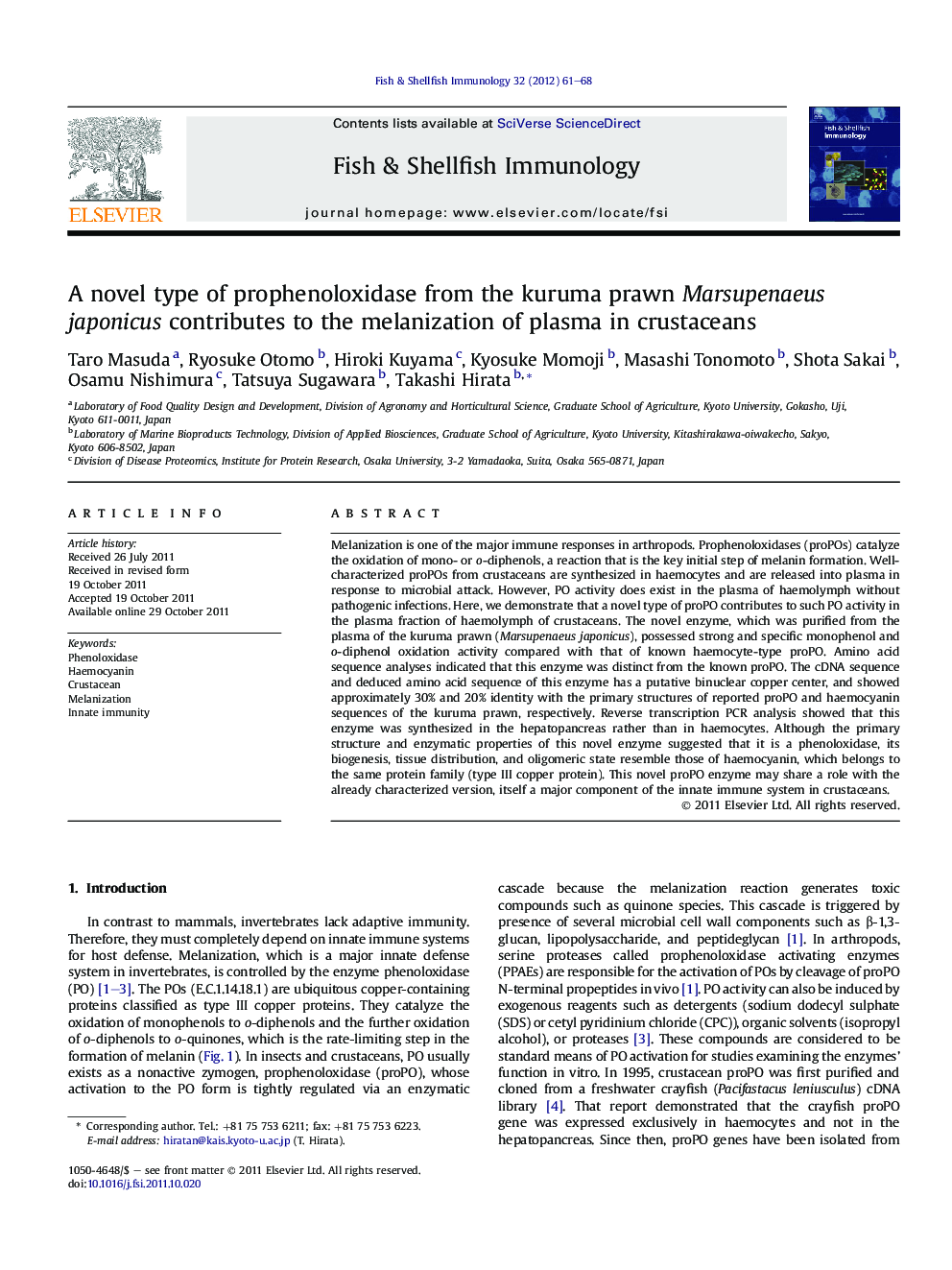| Article ID | Journal | Published Year | Pages | File Type |
|---|---|---|---|---|
| 2432390 | Fish & Shellfish Immunology | 2012 | 8 Pages |
Melanization is one of the major immune responses in arthropods. Prophenoloxidases (proPOs) catalyze the oxidation of mono- or o-diphenols, a reaction that is the key initial step of melanin formation. Well-characterized proPOs from crustaceans are synthesized in haemocytes and are released into plasma in response to microbial attack. However, PO activity does exist in the plasma of haemolymph without pathogenic infections. Here, we demonstrate that a novel type of proPO contributes to such PO activity in the plasma fraction of haemolymph of crustaceans. The novel enzyme, which was purified from the plasma of the kuruma prawn (Marsupenaeus japonicus), possessed strong and specific monophenol and o-diphenol oxidation activity compared with that of known haemocyte-type proPO. Amino acid sequence analyses indicated that this enzyme was distinct from the known proPO. The cDNA sequence and deduced amino acid sequence of this enzyme has a putative binuclear copper center, and showed approximately 30% and 20% identity with the primary structures of reported proPO and haemocyanin sequences of the kuruma prawn, respectively. Reverse transcription PCR analysis showed that this enzyme was synthesized in the hepatopancreas rather than in haemocytes. Although the primary structure and enzymatic properties of this novel enzyme suggested that it is a phenoloxidase, its biogenesis, tissue distribution, and oligomeric state resemble those of haemocyanin, which belongs to the same protein family (type III copper protein). This novel proPO enzyme may share a role with the already characterized version, itself a major component of the innate immune system in crustaceans.
► A novel type of prophenoloxidase cDNA from the kuruma prawn (Marsupenaeus japonicas) was identified. ► This prophenoloxidase was distinctive from well-known one in several points. ► First, it was synthesized in hepatopancreas and was distributed in plasma. ► Second, it formed hexamer, and its sequence was rather similar to haemocyanin. ► Our data also suggested that this novel protein mainly contributes to phenoloxidase activity in plasma of the kuruma prawn.
